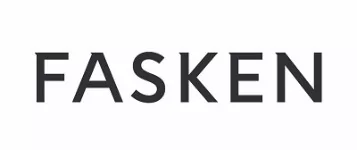On May 24, 2022, the Québec government adopted Bill 96,An Act respecting French, the official and common language of Québec(the "Act"), which modifies theCharter of the French Language(the "Charter") in several ways. The modifications brought by the Act will have a far-reaching impact on how businesses use trademarks on product packaging, labelling, public signage and in commercial advertising. This bulletin covers the effects of Bill 96 as they relate to product packaging and labelling and how best to comply with these new provisions.
Product Packaging and Labelling Amendments
Prior to the adoption of Bill 96, a "recognized" trademark in a language other than French could be used in Québec on a product package or label without being translated into French, provided that a French version of the trademark was not registered.1The term "recognized trademark" had been interpreted to include both registered and applied for trademarks as well as common law trademarks.2
With Bill 96, the scope of this exception is greatly reduced.3First, only registered trademarks will fall within the scope of the exception. For a trademark to appear on a product package or label without an accompanying - and equally prominent - French translation,it must be registered. It is important to keep in mind that this provision affects not only English trademarks, but any trademark in a language other than French. Consequently, a trademark that is composed of words in foreign languages may be equally affected by Bill 96. TheOffice québécois de la langue française(the "OQLF") enforcement authority has even asserted in the past, albeit in a different context, that an invented trademark that includes a foreign language component may be "in a language other than French."
Second, the registered trademark in question must not have a corresponding French version that "appears" on the Canadian register. This wording could be interpreted to include not only registered trademarks, but also applied for marks, further reducing the scope of the amended exception, since what is considered a "French corresponding version" is now broadened.
Third, even if a trademark in a language other than French is registered, if it is partially composed of a generic or descriptive term, that term must nonetheless appear in French on the product package or label. It is unclear whether this French language translation should be displayed in an at least equally prominent manner as within the trademark.
Concretely speaking, how will these amendments affect the rights of trademark owners in Québec? By way of example, use of the fictitious mark BLOOM, in association with pens, would be impacted in the following ways:
- If the BLOOM trademark is not yet registered, it must appear on a product package or label with a corresponding French equivalent with the same or greater prominence.
- If the BLOOM trademark is registered (in English only), it may appear on a product package or label without a corresponding French equivalent ("FLORAISON").
- If the BLOOM trademark is registered in English and a French version of the mark (ex: FLORAISON) is also registered or applied for, then the French version FLORAISON must also appear on the product package or label with the same or greater prominence.
If, however, the fictitious registered trademark was BLOOM PRECISION PEN (for use in association with pens), the term "precision pen" would likely in this case be considered to be descriptive. Consequently, use of the trademark BLOOM PRECISION PEN would be affected as such (presuming a French version of the mark does not appear on the register):
- BLOOM PRECISION PEN may appear on the product package or label exclusively in English, but a French version of the descriptive term "precision pen" (e.g., "stylo de précision") must also appear on the package or label, possibly with at least equal prominence to the words "precision pen."
It remains to be seen how the OQLF will apply these amendments in practice, especially since notions such as "descriptive" and "generic" for trademark purposes fall within federal jurisdiction under the federalTrademarks Act.
How to Comply with Bill 96
The amendments relating to product packaging and labelling will come into effect three years from the date of assent of the Act, June 1, 2022. Trademark owners therefore benefit from a three-year grace period to come into compliance with the Act. That being said, trademark owners should act quickly to file trademark applications, since the current delays at the Canadian Intellectual Property Office are such that trademark applications sometimes take up to three years or more to mature to registration.
Following this grace period, a trademark owner who uses an unregistered trademark (including applied for marks) on a product package or label exclusively in a language other than French may expose themselves to enforcement action, including payment of hefty fines.
In addition, since the definition of "French corresponding version" has changed to apparently include any French trademark appearing on the register, whether registered or not, trademark owners are encouraged to conduct an inventory of their trademark portfolios to determine if they own any French versions of trademarks in other languages. Should this be the case, the French version must also appear on a product package or label following the three-year grace period.
Finally, even if a trademark is registered in a language other than French, if it contains a generic or descriptive term in that other language, that generic or descriptive term must appear in French following the three-year grace period. Under Canadian (federal) packaging laws, a product's common or generic nameor function must appear on the product package or label in both official languages, i.e. English and French, irrespective of any trademark that may also appear on the package or label. Complying with this Federal legal requirement may not be sufficient if the generic or descriptive term included within the trademark is, for example, a quality or characteristic of the productinstead of the product's generic name or function. Moreover, it is unclear at this point whether the amendment to the Charter will require equal or greater visual prominence as compared to how the non-French generic or descriptive term is depicted within the trademark. Product owners are encouraged to conduct an inventory of their product packaging and labelling to ensure compliance with both the amended Québec regime and the existing federal regime.
Conclusion
Bill 96 will directly and significantly impact how trademarks may be used on product packaging and labelling. This may prompt some trademark owners to consider constitutional challenges to the Act on the basis of the division of federal and provincial powers, since the provisions relating to trademark usage may encroach on the federal jurisdiction over trademarks. While it remains to be seen how the OQLF will enforce these new provisions, it is nonetheless imperative for trademark owners to develop an efficient solution tailored to their business goals in order to remain compliant. To obtain advice on the impacts of Bill 96 on your business and trademark use, we invite you to seek advice from our trademarks team.
Footnotes
1. s. 7(4)Regulation respecting the language of commerce and business, CQLR c C-11, r 9. The Act does not amend the Regulation.
2. Québec (AG) c 156158 Canada Inc. (Boulangerie Maxie's), 2015 QCCA 35.
3. s. 51.1Charter of the French Language, CQLR c C-11
The content of this article is intended to provide a general guide to the subject matter. Specialist advice should be sought about your specific circumstances.



